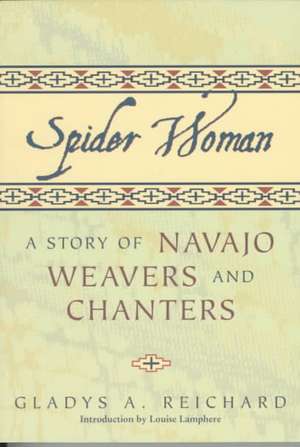Spider Woman: A Story of Navajo Weavers and Chanters
Autor Gladys Amanda Reichard, Reichard Ilustrat de Louise Lamphereen Limba Engleză Paperback – 31 mar 1997
This lively account of a pioneering anthropologist's experiences with a Navajo family grew out of the author's desire to learn to weave as a way of participating in Navajo culture rather than observing it from the outside. In 1930, when Gladys Reichard came to stay with the family of Red-Point, a well-known Navajo singer, it was unusual for an anthropologist to live with a family and become intimately connected with women's activities. First published in 1934 for a popular audience, "Spider Woman" is valued today not just for its information on Navajo culture but as an early example of the kind of personal, honest ethnography that presents actual experiences and conversations rather than generalizing the beliefs and behaviors of a whole culture. Readers interested in Navajo weaving will find it especially useful, but Spider Woman's picture of daily life goes far beyond rugs to describe trips to the trading post, tribal council meetings, curing ceremonies, and the deaths of family members.
Preț: 138.99 lei
Nou
26.60€ • 28.88$ • 22.34£
Carte disponibilă
Livrare economică 02-16 aprilie
Specificații
ISBN-10: 0826317936
Pagini: 287
Dimensiuni: 142 x 204 x 25 mm
Greutate: 0.45 kg
Editura: University of New Mexico Press














